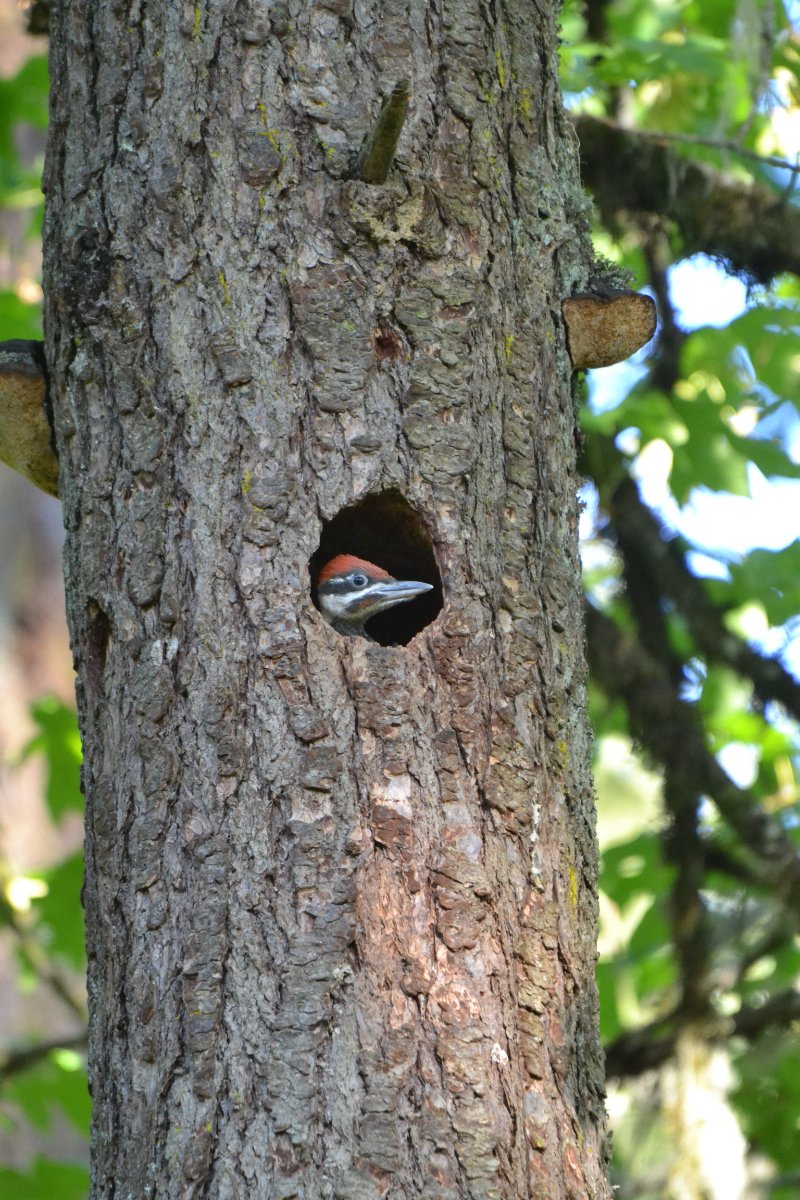Red-tailed hawks can often be seen soaring in the clear blue skies of summer. As they circle overhead, the sun illuminates their tail's warm, red feathers from where they get their name.
Red-tail hawks love the arboretum. It has the perfect habitat of open, grassy meadows that support an abundance of animals, like voles, mice, pocket gophers, ground squirrels, and rabbits. These small mammals make up most of the hawk’s diet. In addition, there are many tall trees and snags adjacent to these open spaces where the hawks can sit, watch, and wait for an opportunity to grab their prey.
Red-tail hawks also nest out at the arboretum. I usually see their nests in the crown of tall cottonwood trees along the river. They will often refurbish an old nest used in previous years or build a new one. The nest is a sizable construction of dry sticks up to 6.5 feet high and 3 feet wide. The inner part of the nest is lined with bark strips, fresh foliage, and dry vegetation.
The call of the red-tailed hawk is usually given while soaring. Peterson describes it as an “asthmatic squeal, keeer-r-r (slurring downward).” The Cornel Lab characterizes it as, “a hoarse, screaming kee-eeeee-arr.” While those interpretations are useful, I think they don’t capture the essence. To me, the line from section 52 of Walt Whitman’s poem Song of Myself truly expresses the call of the red-tailed hawk: “I too am not a bit tamed, I too am untranslatable, I sound my barbaric yawp over the roofs of the world.”
Nature is an inexhaustible source of wonder. Hope to see you out there.
Peterson, Roger Tory, et al. Peterson Field Guide to Birds of Western North America. 4th ed, Houghton Mifflin Harcourt, 2010.
Red-Tailed Hawk Overview, All About Birds, Cornell Lab of Ornithology. https://www.allaboutbirds.org/guide/Red-tailed_Hawk/overview. Accessed 7 July 2022.



































































